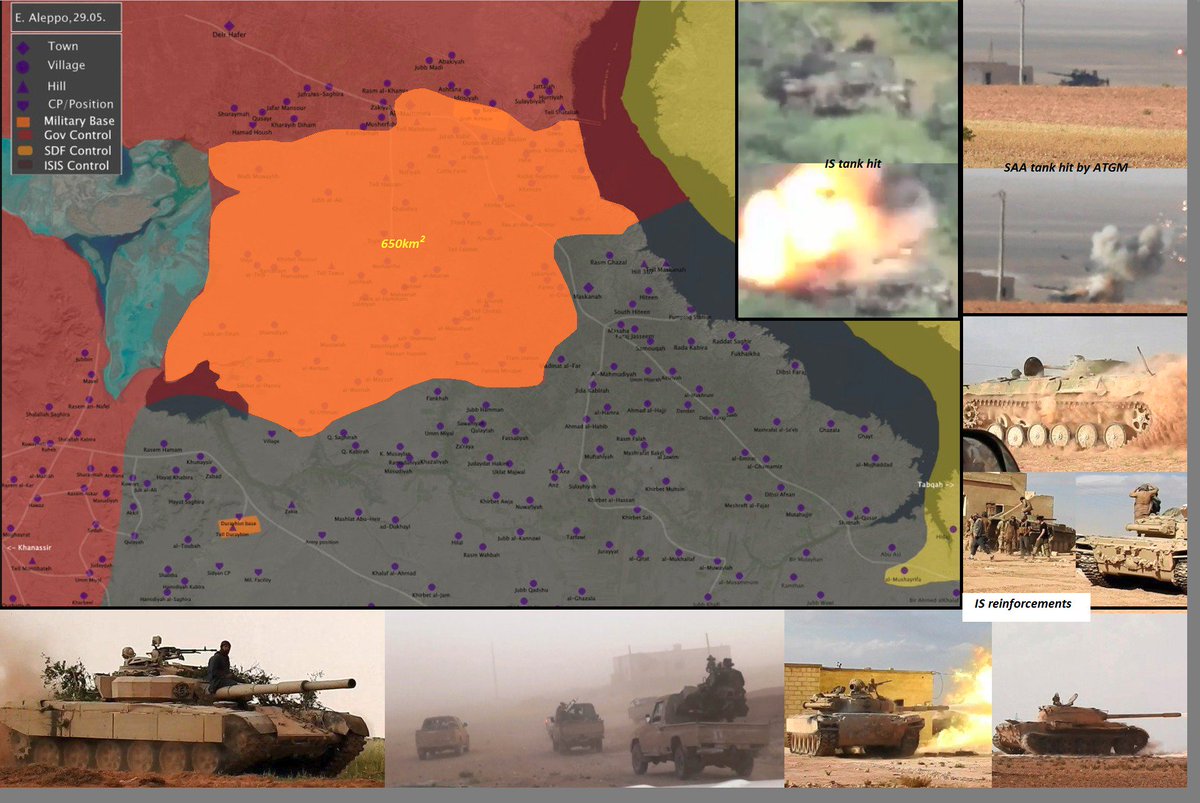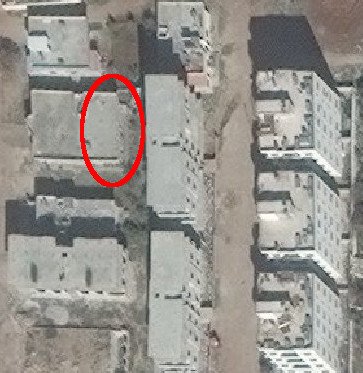Just as military activities have quieted on most fronts between the soldiers of Damascus and the Syrian rebels supported by al-Qaeda (Hay’atTahrir al-Sham) following the Astana agreement imposed by Russia, Turkey and Iran, more than
40,000 soldiers and elite special forces of Damascus and its allies – supported by Russian Air Force and Special Forces in the ground – started a large scale military operation against “Islamic State” (ISIS), the biggest of its kind in all these years of war.
These forces attacked ISIS on 3 fronts: from Suweida south; within al Badiya (the Syrian steppe) in mid-east Syria and south of Tamdur, Palmyra, towards al-Sukhna and Qaryateyn; and south of al-Jarrah military airport to secure Khanaser road once for all. The aim was to recover the largest territory possible from ISIS and to close all roads to the US plans to divide, not only the north east of Syria, but also the Syrian steppe and to create a “buffer zone” for Israel with Jordanian consensus and participation.
Moreover, this large military operation in Syria is advancing hand in hand, in full harmony, with the ongoing one in Iraq, against ISIS, where the Iraqi security forces – the 19 brigades of the Popular Mobilisation Units – have reached the Syrian-Iraqi borders on Umm Jreis (west of Mosul) and are planning to build a long wall along the Syrian-Iraqi borders and take control of the line of the border starting from the province of Nineveh (Sinjar) to the province of Anbar and up to the crossing border point in al-Qaem/albu Kamal.
The Syrian-Iraqi plans aim to disrupt Washington’s attempt to close the borders between Iraq and Syria and establish a base for a Syrian proxy group on al-Tanaf. This is one of the reasons why the US bombed Syrian allies forces at 45 km from al-Tanaf crossing when these engaged with the US proxies and
managed to take hold of a fully equipped US command and control vehicle(???). Syrian allied forces attacked and overwhelmed the US proxies close to al-Tanaf borders when the US jet attacked and destroyed the vehicle even whilst it was being inspected, killing 6 militants.
The US forces are aware of the impossibility of holding on to this crossing point (al-Tanaf) for very long: the Iraqi forces are quickly advancing along the borders and will encounter the Syrian forces on the other side. This is exactly what Washington hoped, in vain, to avoid.
The US forces are aware of the impossibility of holding on to this crossing point (al-Tanaf) for very long: the Iraqi forces are quickly advancing along the borders and will encounter the Syrian forces on the other side. This is exactly what Washington hoped, in vain, to avoid.
Thus, America’s plan did not last long, especially since its Syrian allies – if they wanted to give them the control of the border between Syria and Iraq – are characterized by a sectarian bias that is not commensurate with trading between the two countries and especially the plurality of sectarianism in Mesopotamia. Therefore, any Syrian sectarian forces of the United States cannot stand for long on the border because their presence will undoubtedly cause a military confrontation between them and the Iraqi forces- sooner or later.
Russia, Syria, Iran and Iraq have agreed to coordinate their forces to ensure that there is no “return” to Iraq for ISIS and its elimination in Syria and the failure of any plan to keep the border between the Levant and Mesopotamia closed. America is well aware of the extent of ISIS weaknesses and attempts to take as much of the Syrian territory as possible to pass it on to the enemies of Damascus and impose the partition of the country and a political swap in exchange for the territory. However, Damascus’ allies are also determined to deal with the US troops in Iraq and Syria when the war ends and the threat to Syria’s stability becomes irrelevant.
The Syrian army and its allies manoeuvre today with around 40,000 men with its allied forces, with the Syrian and Russian Air Force coverage, while the United States, Britain and Jordan, manoeuvre with 4000-5000 armed men operating within the Syrian Badia (steppe) from Suwayda to the Al-Tanf crossing with Jordan and US providing air support. All in a race to conquer the largest territory possible, taking it from the weakened ISIS.
Moscow has committed itself to backing up its allies while facing the US plan in the Syrian steppe, by providing all necessary support to preserve the territory retaken from ISIS
(over 12,500 square Kilometres – larger than the surface of Lebanon) 
during the last ten days of continuous military operations.In this steppe there are oil wells, mines and other raw materials that Moscow began to exploit to extract oil and use it in the Levant for military purposes.
It is certain that American forces will never know long-term stability in Syria. This is due to the following:
- Turkey will not accept the growing strength of the Kurds in Syria and is prepared for subversive military action against America in the Levant which threatens the stability of Ankara, for the sake of its national security interest.
- Iran has dealt with the US occupation of Iraq and is waiting for an opportune moment to repeat the same action in Syria, especially as it has already formed a popular Syrian resistance base similar to that of the Lebanese Hezbollah.
- Moscow wouldn’t be against seeingthe United Statessink into the Syrian quagmire, especially as the taste of its defeat in Afghanistan (and the role of the US in it) is still a nasty taste in the mouth of the Kremlin.
The Syrian opposition and Al-Qaeda are waiting for a political solution that could end the hostilities for years,a solution to deal with the Syrian crisis or even an internal uprising against al-Qaeda and its strict Islamic rules – which will certainly not fit the lives of many Syrians living in the northern city of Idlib when the war ends. A solution to achieve with the support of Turkey and Russia.




 during the last ten days of continuous military operations.In this steppe there are oil wells, mines and other raw materials that Moscow began to exploit to extract oil and use it in the Levant for military purposes.
during the last ten days of continuous military operations.In this steppe there are oil wells, mines and other raw materials that Moscow began to exploit to extract oil and use it in the Levant for military purposes.

 franco
franco



